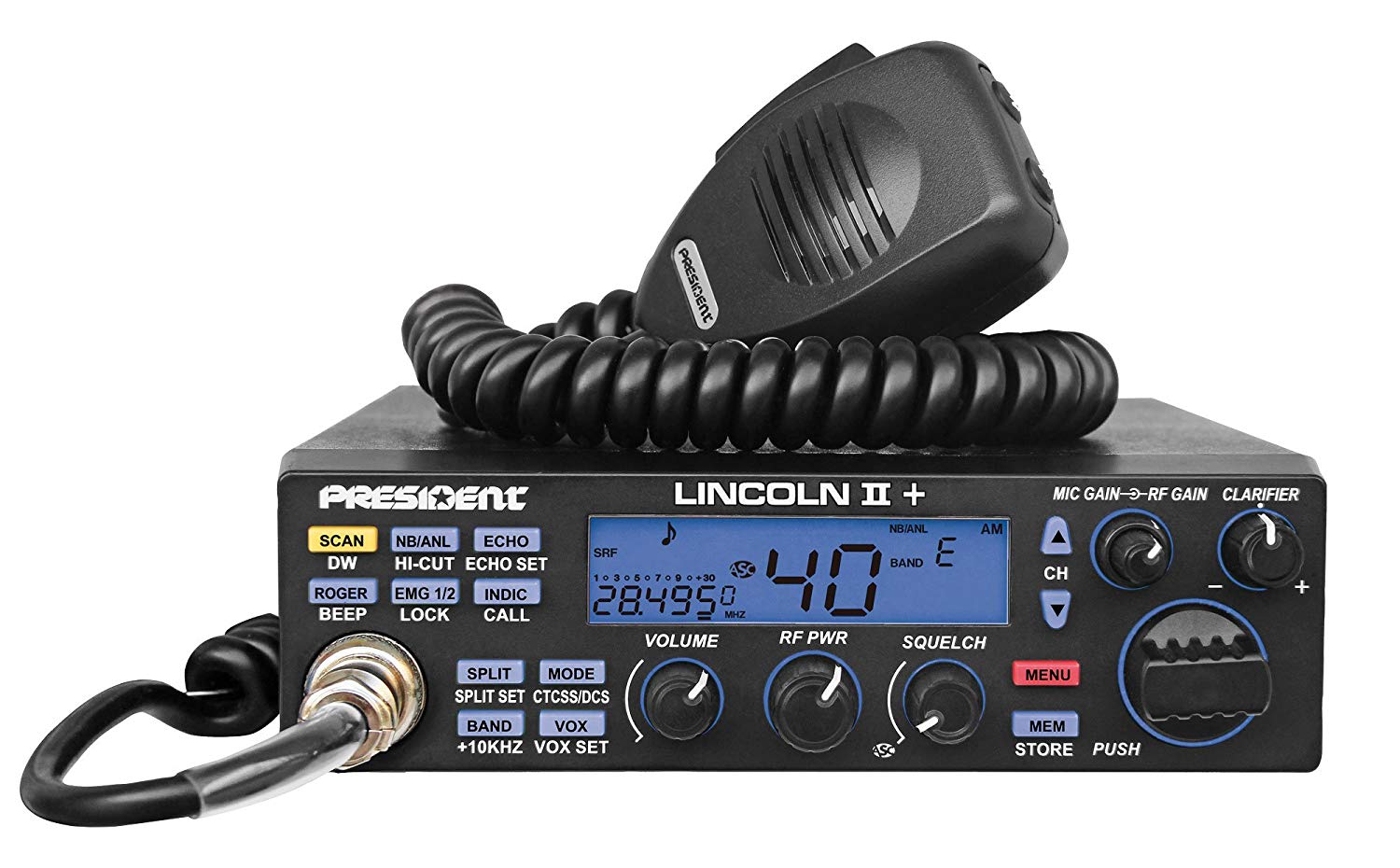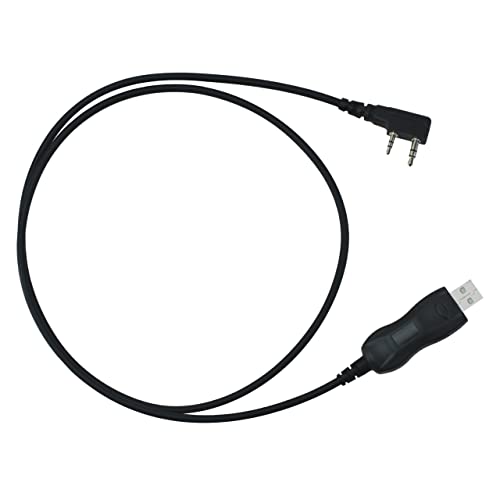Becoming a ham radio operator isn’t hard if you have the money, time and determination to stick at it. Actually, all you may need is just curiosity to get into this universe that, to outsiders, looks like a place reserved for only nerds and weird people with no active social life.
For real ham operators though, there is nothing as exciting as listening to some transmission coming from thousands of miles away. They get to learn new stuff and cultures and even help out in emergencies by informing rescue teams of dire situations.
There are so many activities involved it is no wonder ham operators hardly quit once they start.
So you recently caught the bug, and now have your ham radio license, joined a local ham club in your area and attended most of the free classes to help you get started, and met some awesome hammies along the way; the next question is, ‘What next?’
To get some ham radio kits for beginners naturally. This is the stage you make a solid commitment to becoming a ham radio operator.
There are different types of kits with varying degree of complexity ham operators use. But as a beginner, and perhaps with a limited budget, you don’t need expensive or complicated gear. You are just starting and you don’t want your budding enthusiasm to be smashed to bits by the steep learning curve of sophisticated kits.
The kits below are the basic kits you would ever need to get you started as a newbie ham radio operator.
Important Ham Radio Kits for Beginners
Transceiver – For beginning hammies, there are two types of transceivers to choose from: handheld and portable units. As the name implies, the units are capable of receiving and transmitting messages.
The handheld models are cheaper and easier to use but their scope is limited. They have a range that depends on the onboard power of the radio.
Some examples of the handheld transceivers include BaoFeng’s UV-82HP, UV-5R and BF-888S, Yaesu VX-6R, and Kenwood TH-D72A.
- Walkie Talkie Model: Baofeng BF-888s;Each radio has a earpiece
- 1500mAh Li-ion battery; Low Voltage Alert; Intelligent Charging. Maximum Power Output- 3-5 Watt
- 16 channel. 50 CTCSS/105 CDCSS.
The portable transceivers or portable ham radios are bigger than the handheld units making them more expensive. With careful search though, you would be able to get bargain buys.
Portable ham radios can be mounted in cars or even used as a base station in your shack or operating room. Some popular models include the Icom 2300H, Kenwood TM-281A, and BTECH UV-50X2.
- The UV-50X2 has been upgraded with Audio I/O support through the RJ45 Microphone Port. Included is also a K1 Audio adaptor. The K1 accessory jack is the most common radio accessory jack in the market. This means the UV-50X2 has the widest support of aftermarket audio accessories allowing you to find the best accessories for however you use your radio.
- The UV-50X2 includes all of the necessary mounting hardware to easily wire into any vehicle. You can use the UV-50X2 as a base station at home or in the office with the optional RPS-30M power supply (not included).
- Recommended Accessories: Pair UV-50X2 with the Nagoya UT-72 Magnetic Mount Antenna for easy installation. The PC04 FTDI Cable is recommended for easy computer programming
Linear Amplifier – You would need a linear amplifier to increase the signal strength of the transmitter. As a ham radio operator, the law restricts you to a maximum of 1500 watts on amateur channels or frequencies.
During your training as a ham operator, you must have been made aware of the term ‘QSO’ which in ham lingua refers to radio contact between two ham operators.
Another amplifier-related law limits you only to the power necessary for a QSO or to communicate with another ham radio operator. If the Tx/Tr signal is weak, the amplifier would boost it and ensures the distant contact hears you clearly.
BTECH’s AMP-V25 is a great linear amplifier that is compatible with ham radios from major manufacturers. The analog amplifier is not expensive and isn’t complicated for a beginner. The SMSL SA50 TDA7492 Class D amplifier is another inexpensive product that would suit a beginner.
- Enhanced Communication Range: Transform your handheld radio into a high-power device for mobile, field, or base use with the BTECH AMP-V25, ensuring clear, extended range communication.
- Universal Compatibility: Seamlessly connects with popular handheld radio brands including BTECH, BaoFeng, Kenwood, Yaesu, ICOM, and Motorola, with a simple plug-and-play setup.
- Comprehensive Kit: Includes everything you need - Amplifier, Mounting Bracket, Cables, and a Speaker Microphone, for a hassle-free experience right out of the box.
Switching Power supply – Though most of the equipment you’ll come with ether built-in power supply or external power supply, you would need this gear for a variety of good reasons.
Many amateur radio kits required 12 Volts DC power to operate. This equipment converts the 110/220 AC input voltage to 12V DC output for gadgets that can only function with DC. The best ones allow you to adjust the voltage between 9.0V and 15.0V.
You don’t want to confuse this with a linear power supply. Back in the day, the linear power supply was the only one available to users. But with the recent advancement in technology, the switching power supply came in as a better option.
The switching version comes with several advantages which include less costly, smaller, compact and more efficient. But you would have to contend with the humming noise.
TekPower’s TP350, the Universal Compact Bench Power Supply by Pyramid, and Samlex’s SEC-1235M are some very dependable switching power supply you would find in many online stores or a hardware store.
- CONVERTS AC TO DC: The Pyramid Bench Power Supply features regulated design. Provides convenient and reliable AC-to-DC power conversion w/ constant source of DC voltage. Works w/ cellular phones, CB radio, scanner, HAM radio, etc
- SCREW-TYPE TERMINALS: Features universal hardwired screw-type connection terminals that ensure compatibility with a wide range of devices, equipments and components. Used for component and device equipment testing, operation and performance
- PLUG-IN OPERATION: The simple plug-in operation provides a constant source of DC voltage, allowing for quick and consistent power conversion. Switch-activated power control eliminates the need of an external battery or additional power source
Programming Cable – A good programming cable is an essential part of a newbie hammy’s kit. Many modern ham radios come with ports that allow connecting the radio to a computer via a USB cable.
- The PC03 is the recommended hassle free radio programming cable designed for use on the Kenwood K1 Jack standard commonly used on many two way radios including: Baofeng, BTECH, Kenwood, Retevis, TYT, pxton, Tidradio, Kenwood, Wouxun, Radioddity, along with several more brands.
- The PC03 is the genuine USB programming cable you want for easily connecting your radio to your computer. No Driver Issues - No old drivers needed - Plug and Play
- Unlike the common "clone" USB programming Cables available Amazon - These cables just work! You will still need need to download the programming software needed for your radio.
Once connected, all the frequencies can be programmed into the radio. This makes it easy to select the frequency you want to monitor without needing to manually input the numbers all the time.
Some programmable ham radios come with the programming cable. However, you can always ask the vendors or manufacturers to include the cable when you are making your order.
Antenna – What is ham radio without a decent antenna? The type of antenna you have would determine the device’s range and the quality of the Tx/Tr operations.
Most handheld devices come with detachable antennas you can swab for a better one if you are not satisfied with the performance of the stock version.
Mobile units, especially those mounted in cars, use whip antennas. These are purchased with the mounting gear. Generally, the longer the antenna, the better the transmission and reception.
For base stations, your best bet is to build the antenna yourself. Apart from the thrill of building your gear, you get the save money on antennas that might not even be as good.
This excellent piece here would guide you on how to build your own antenna.
Conclusion
Knowing the basic ham radio kits for beginners is very essential if you want to start the journey into the practical world of ham radio operation on a solid foundation.
You don’t need to spend much to get the basic kits ready. With patience and tenacity, you would be able to track down all the kits you need at affordable prices.
You can even build your antenna instead of wasting money on one that may not be worth the cost in terms of efficiency.
A final word, if you are flummoxed by the whole idea of getting your kit from scratch, simply contact one of the veteran hammies you met at the local ham radio club to help you out. You can also ask at the hardware store, emergency services staff or even the police for information on how to contact a ham radio operator near you.





